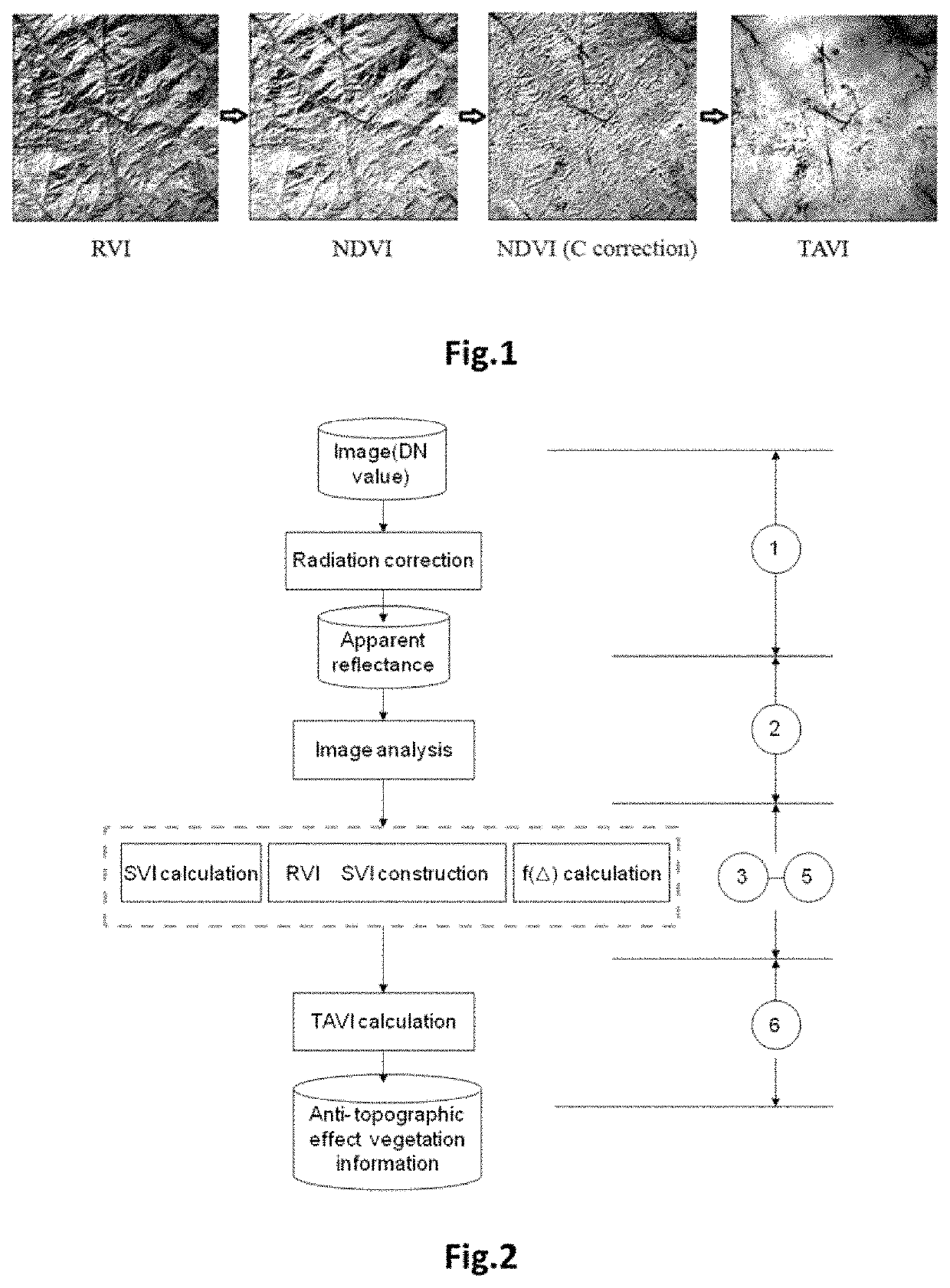Method of calculating TAVI based on a band ratio model and solar altitude angle
a band ratio model and solar altitude angle technology, applied in the field of calculating a tavi based on a band ratio model and a solar altitude angle, can solve the problems of limited application of promoted methods within a large range, affecting reducing the accuracy of vegetation information, so as to achieve accurate inversion and convenient application. , the effect of reducing the difficulty of calculating
- Summary
- Abstract
- Description
- Claims
- Application Information
AI Technical Summary
Benefits of technology
Problems solved by technology
Method used
Image
Examples
Embodiment Construction
[0032]The present invention will be further described below in conjunction with the accompanying drawings and an embodiment.
[0033]Referring to FIG. 2, the present disclosure provides a method of calculating a Topography Adjusted Vegetation Index (TAVI) based on a band ratio model and a solar altitude angle. The method includes the following steps.
[0034]At step S1, image preprocessing is performed, which specifically includes: performing radiation correction on a multi-spectral remote sensing image to generate apparent reflectance data of the image.
[0035]At step S2, the quality of the image is analyzed, which specifically includes: determining the apparent reflectance data of a red band and a near-infrared band of the remote sensing image (calculating mean values, mid-values, variances and other indices of the two bands) and analyzing whether the reflectance of mountainous vegetation is reasonable at the two bands to decide whether the image is normally available.
[0036]At step S3, a ...
PUM
| Property | Measurement | Unit |
|---|---|---|
| solar altitude angle | aaaaa | aaaaa |
| apparent reflectance | aaaaa | aaaaa |
| reflectance | aaaaa | aaaaa |
Abstract
Description
Claims
Application Information
 Login to View More
Login to View More - Generate Ideas
- Intellectual Property
- Life Sciences
- Materials
- Tech Scout
- Unparalleled Data Quality
- Higher Quality Content
- 60% Fewer Hallucinations
Browse by: Latest US Patents, China's latest patents, Technical Efficacy Thesaurus, Application Domain, Technology Topic, Popular Technical Reports.
© 2025 PatSnap. All rights reserved.Legal|Privacy policy|Modern Slavery Act Transparency Statement|Sitemap|About US| Contact US: help@patsnap.com

